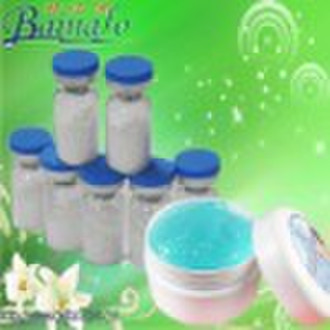Каталог
-
Каталог
- Автомобили и мотоциклы
- Безопасность и защита
- Бизнес
- Бытовая техника
- Бытовая электроника
- Детали машин и услуги по их изготовлению
- Дом и Сад
- Здоровье и медицина
- Игрушки и хобби
- Изделия из металла
- Измерительные и анализирующие приборы и инструменты
- Инструмент
- Красота и личная гигиена
- Мебель
- Мероприятия по охране окружающей среды
- Минералы и металлургия
- Модные аксессуары
- Обувь и аксессуары
- Одежда
- Освещение
- Подарки, сувениры
- Продовольственные товары и напитки
- Промышленное оборудование и техника
- Резина и пластмассы
- Сельское хозяйство
- Специальное оборудование
- Спорт, отдых и досуг
- Сток
- Строительство и недвижимость
- Текстиль и кожа
- Телекоммуникации
- Товары для офиса, учебы. Канцтовары
- Транспорт
- Упаковка и печать
- Химикаты
- Часы, Украшения, Очки
- Чемоданы, сумки
- Электронные компоненты, оборудование, принадлежности
- Электротехническое оборудование и принадлежности
- Энергия
Filters
Search
Гиалуроновая кислота / HA Косметика класса
ориг. цена: 300,00 USD
Чжэнчжоу, Китай

Xia
Контактное лицо
Основные данные
Hyaluronic acid / HA Cosmetic Grade Application in skin: reduce acne, scars, injury or lines in the skin. OEM production offeredHyaluronan is a common ingredient in skin-care productsIn 2003, the FDA approved hyaluronan injections for filling soft tissue defects such as facial wrinkles. Restylane is a common trade name for the product. Hyaluronan injections temporarily smooth wrinkles by adding volume under the skin, with effects typically lasting for six months.Juvederm is a bacterial hyaluronic acid injectable filler, similar to Restylane, but differing slightly in terms of effect and longevity. It is used for lip augmentation, reduction of folds and wrinkles and removal of scars. The effects of Juvederm treatments are also temporary, and costs are similar to those of Restylane.The presence of hyaluronic acid in epithelial tissue has been shown to promote keratinocyte proliferation and increase the presence of retinoic acid, effecting skin hydration. Hyaluronic acid's interaction with CD44 drives collagen synthesis and normal skin function. Present in the extracellular matrix of basal keratinocytes, hyaluronic acid is critical to the structural integrity of the dermal collagen matrix. These benefits make hyaluronic acid a very effective topical humectant; however, results may only be sustained as part of an ongoing treatment program.Hyaluronic Acid’s Role in Health Hyaluronic acid is a naturally occurring substance within the body that belongs to the class of compounds known as glycosaminoglycans (GAGs). In addition to HA, GAGs also include chondroitin sulfate, dermatin sulfate, keratin sulfate, heparin, and heparin sulfate. Some of the unique qualities of HA arise from the fact that it is the only GAG that is exclusively non-sulfated. Molecules of HA consist of repeating units of N-acetylglucosamine and glucuronic acid. Clinically the decline in the body’s concentration of HA with aging have long been of interest. Though this paper is dedicated to the discussion of HA and skin health, it is imperative to appreciate that drops in quantity, quality and distribution of HA across the spectrum of body tissue types occur. Therefore, it is logical that we would supplement the skin directly with HA just as we would use it internally to nourish joints, eyes, or any other body part. It is clearly documented in the research literature that the elastic properties of joint fluid and connective tissue decrease with age.2 Likewise a decrease in the presence of HA in eye tissue after the fifth decade is believed to contribute to increased retinal disorders.3 Furthermore older individuals with glaucoma were found to have virtually no HA in areas of the optic nerve, while similar changes were not found in either age-matched persons with normal sight, or in younger individuals. 4-5
Условия поставки и упаковка
Packaging Detail: Strong damp-proof, water-proof packing. Delivery Detail: Delivery against payment
Порт: Shanghai
Условия оплаты
Аккредитив
Электронный перевод
-
Способы оплаты
Для оплаты товаров и услуг на нашем портале, Вы всегда получаете счет, в котором Вам необходимо самостоятельно указать свои данные.
Мы принимаем к оплате:









